Babies first foods checklist
When to Start Baby Food
Starting solids is an exciting and important milestone in baby’s development—one that not only opens them up to a brand-new world of flavors and textures, but also puts them on the right path to growing healthy and strong. Here’s what you need to know about how and when to start baby food for a smooth transition.
In this article:
When to start baby food
How to start baby on solids
Best first foods for baby
Introducing allergenic foods
When to Start Baby Food
Knowing when to start baby food is both crucial and tricky. Starting baby on solids too early means you might increase the risk of choking, obesity and bellyaches, but introducing solids too late means you might slow baby’s growth and encourage an aversion to solid foods, among other conditions. Fortunately, doctors have zeroed in on a sweet spot for starting baby food, which is sometime between 4 and 6 months of age—though, ideally, baby should be receiving their nutrition exclusively from breast milk until the six-month mark, according to the American Academy of Pediatrics (AAP). How to tell if it’s time for starting solids for your little one? Baby will give you clues, including:
• Baby can sit in a high chair comfortably on their own. This is a major sign in terms of when to start baby food, says Lauren Kupersmith, MD, a pediatrician at Hassenfeld Children’s Hospital at NYU Langone in New York City. It means baby can hold their head up and doesn’t need to be propped up to stay in the upright position, which is important to avoid choking.
• Baby looks interested at mealtime. Babies likes to mimic what we do, so if your child likes to sit up like a big kid and watch you eat, then by all means let them try eating too.
• Baby can move food to the back of their throat to swallow. But if baby tends to push the food out of their mouth—not because they don’t like it, but because they can’t seem to get the food to where it needs to go—hold off on starting solids.
How to Start Baby on Solids
At 4 to 6 months, most of baby’s nutrition will still come from breast milk or formula, so don’t worry if baby doesn’t like eating food right away. Introducing solids is a gradual process, and every baby learns in their own time. Here are some general guidelines for how to start baby on solids:
Introducing solids is a gradual process, and every baby learns in their own time. Here are some general guidelines for how to start baby on solids:
• Feed baby with a spoon. Letting your child go at it with their hands may seem tempting (and super-cute), but it’s best that they learn the right way from the get-go. (And even then, be prepared to clean up more than a few messes!) Also, never put cereal (or any other food) in baby’s bottle—it’s a choking hazard.
• Start slowly. When introducing solids, a half spoonful will do at first—you may even want to talk baby through it (“Yummy!”). To make it easier for baby to get accustomed to the idea of swallowing solids, start mealtime with a little breast milk or formula, then offer some food (again, no more than a half teaspoon at a time) and finish off with more breast milk or formula. If baby cries or turns away when you present the spoon, try again some other time. Start off with introducing solids at one meal a day, then slowly work your way up. The morning is a good place to start, since baby is often hungriest at that time. When starting solids, baby typically won’t eat more than an ounce or two in one sitting.
The morning is a good place to start, since baby is often hungriest at that time. When starting solids, baby typically won’t eat more than an ounce or two in one sitting.
• Try new foods more than once. Since babies’ tastes will evolve, you may need to try a food 20 times before a baby actually likes it, says Kupersmith.
• Stick with the same food for three days before trying another one. This makes it easy to track whether baby is allergic to a particular food.
• Try foods in different forms. If baby doesn’t like pureed food, try it mashed. After all, baby is learning about new textures as well as new tastes. It may be a case of trial and error until you find a winner.
Best First Foods for Baby
Got baby safely strapped into the high chair and bib? You’re ready to finally start feeding baby solids! There aren’t any official food rules for babies starting solids, and there’s no scientific evidence suggesting you should introduce one type of food before another, assuming the foods aren’t choking hazards. Nevertheless, baby cereal (such as oatmeal, rice and barley) is an “easy training food,” says Kupersmith, which is why it’s often recommended as baby’s first food; you can always mix it with more milk to build up to a thicker consistency. Many doctors also recommend starting vegetables before fruits, but there’s no evidence that this would make babies like vegetables more when they grow up—babies innately love sweets, and the order of introducing solids to baby doesn’t change that.
Nevertheless, baby cereal (such as oatmeal, rice and barley) is an “easy training food,” says Kupersmith, which is why it’s often recommended as baby’s first food; you can always mix it with more milk to build up to a thicker consistency. Many doctors also recommend starting vegetables before fruits, but there’s no evidence that this would make babies like vegetables more when they grow up—babies innately love sweets, and the order of introducing solids to baby doesn’t change that.
So why not simply start introducing solids with something you think baby will like? Here are a few common first foods for baby that are healthy and easy to eat (and, in the case sweet potato and banana, also easy to digest). Whatever you decide to feed baby, mash it with a fork or puree before serving whenever introducing solids.
- Baby cereal, such as oatmeal, rice, barley
- Sweet potato
- Banana
- Avocado
- Apples
- Pears
- Green beans
- Butternut squash
If your child has been breastfeeding, check with your pediatrician about getting a jump on pureed chicken or beef when you’re starting solids. These foods contain easily absorbable forms of iron and zinc, which baby needs by 4 to 6 months, according to the AAP.
These foods contain easily absorbable forms of iron and zinc, which baby needs by 4 to 6 months, according to the AAP.
At around 9 months, baby should have already worked their way up to a variety of foods, including cereal, vegetables, fruits, meats, eggs and fish (see below regarding the last two). (Keep in mind, though, that baby will still get the majority of their nutrients from breast milk or formula until age one.) By now, baby will probably settle on three meals a day along with two snacks. Let them consume about 4 ounces of solids at each meal (equivalent to a small jar of strained baby food) and about half that amount for each snack.
Save honey and cow’s milk for after baby’s first birthday—there’s a risk for infant botulism with honey (a type of bacterial poisoning), and baby’s tummy isn’t prepared to digest large amounts of cow’s milk until they’re about one year old. Avoid adult processed foods and foods that are choking hazards (such as sticky foods, like large gobs of peanut butter; hard foods that are difficult to gum, like raw vegetables, nuts, seeds and popcorn; and round, slippery foods that haven’t been cut up, like grapes and cherry tomatoes).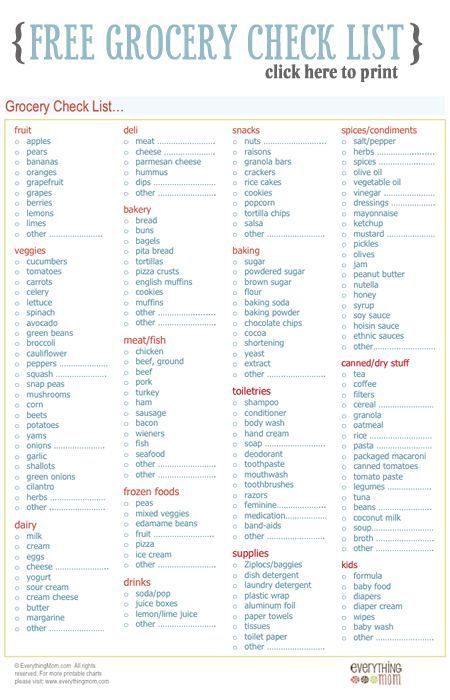 Instead, the first foods for baby, and those in the months that follow, should be soft and served mashed, pureed or (once baby seems ready to move up from the really mushy stuff) cut up into really little bits. “There’s pretty much free reign at that point,” Kupersmith says.
Instead, the first foods for baby, and those in the months that follow, should be soft and served mashed, pureed or (once baby seems ready to move up from the really mushy stuff) cut up into really little bits. “There’s pretty much free reign at that point,” Kupersmith says.
Introducing Solids Chart
Hesitant about improvising your first foods for baby? That’s okay too. If you prefer an “introducing solids chart” to help you plan out baby’s path, the guide below can come in handy.
Image: The Bump
Introducing Allergenic Foods
Much of the confusion around when to start baby food stems from questions concerning allergenic foods. These are foods that babies are most often allergic to. The major culprits include dairy, eggs, fish, peanuts and tree nuts. In the past, parents were advised to hold off on exposing baby to these foods, but now doctors recommend introducing them early, often and in age-appropriate format, which means starting off with purees and soft textures.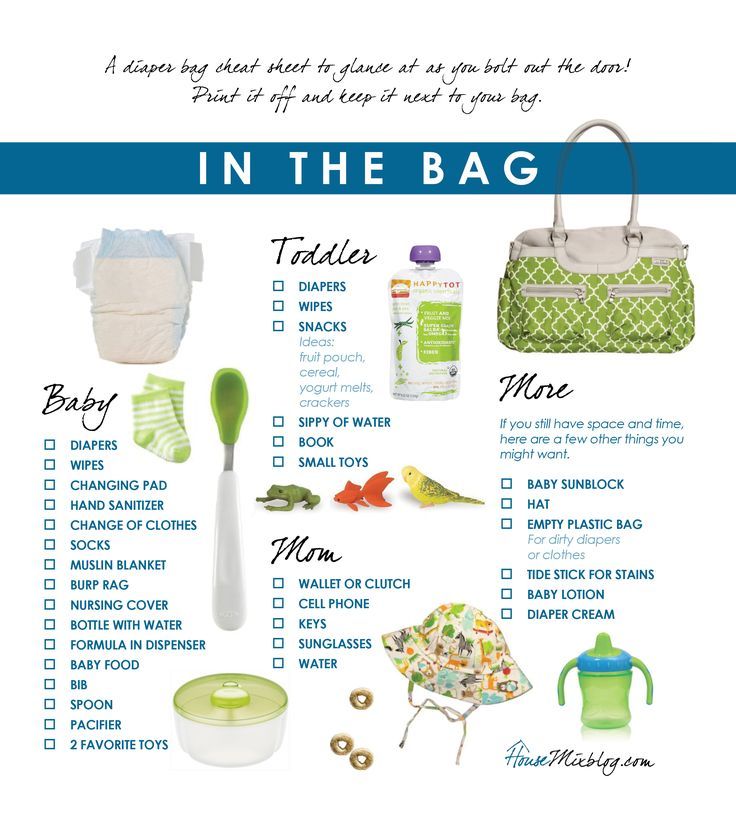
“Dairy is an easy starting point, given options such as yogurt and cheese,” says David Stukus, MD, director of the Food Allergy Treatment Center at Nationwide Children’s Hospital and a spokesperson for the American College of Allergy, Asthma, & Immunology. You can also try scrambled eggs in small amounts, although baby may not be too pleased with the texture at first.
As far as peanut products go, the National Institutes of Health issued new guidelines in 2017 that encourage parents of children at high risk for peanut allergies to incorporate them into baby’s diet at 4 to 6 months of age. Giving these babies peanut products before the age of one actually decreases their risk of developing a peanut allergy before age 5 by 81 percent, compared to kids who are introduced to peanuts later in life. Parents of kids without the food allergy risk can start peanut products whenever they’d like, as long as the nuts are in an age-appropriate form: Peanut butter can be thinned out with water or mixed into a fruit or vegetable puree, and peanut powder can also be mixed into cereal and fruits. Don’t give whole peanuts or pieces of peanuts, since they’re a choking risk.
Don’t give whole peanuts or pieces of peanuts, since they’re a choking risk.
Allergic reactions to food are never just a fluke; they will happen with every exposure. Symptoms can range from mild (such as a rash or vomiting) to severe (such as trouble breathing). If baby has a food allergy, you’ll notice a reaction within minutes or up to two hours after eating the problematic food, Stukus says. If the symptoms are severe, call 911 right away. Otherwise, talk to your pediatrician; she can help confirm whether it’s an allergy or some other type of condition (such as a viral illness).
Expert bios:*
Lauren Kupersmith, MD, IBCLC, is a pediatrician and clinical instructor at Hassenfeld Children’s Hospital at NYU Langone in New York City, as well as a certified lactation consultant. She earned her medical degree from New York Medical College in 2005.
David Stukus, MD, is the director of the Food Allergy Treatment Center at Nationwide Children’s Hospital, an associate professor of pediatrics in the division of allergy and immunology and a spokesperson for the American College of Allergy, Asthma, & Immunology.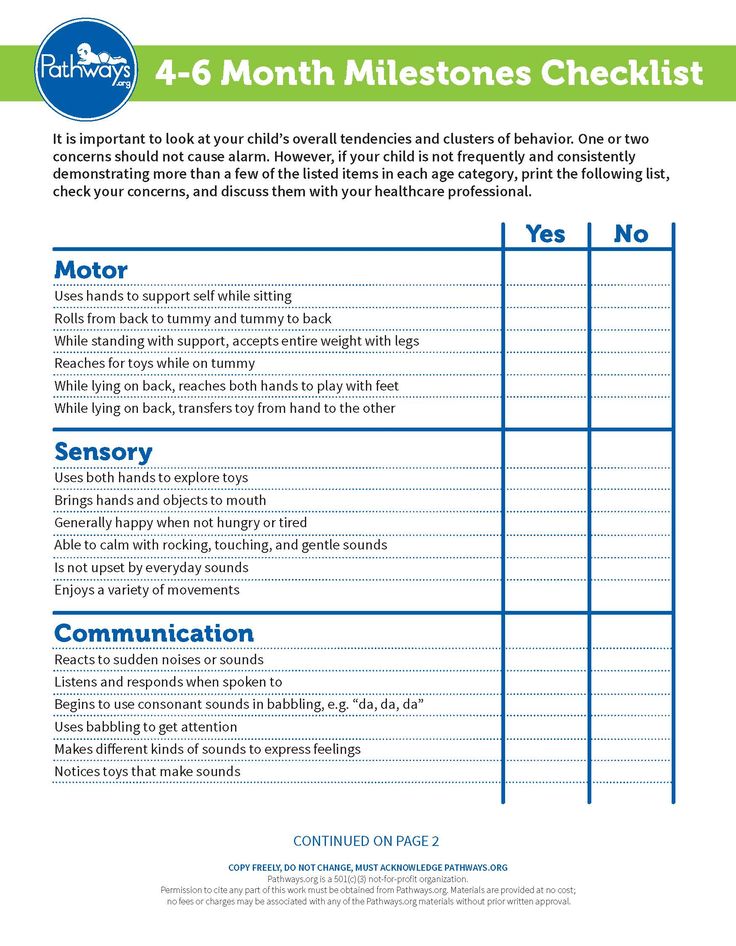 He earned his medical degree from University of Pittsburgh School of Medicine in 2002.
He earned his medical degree from University of Pittsburgh School of Medicine in 2002.
Updated January 2020
Please note: The Bump and the materials and information it contains are not intended to, and do not constitute, medical or other health advice or diagnosis and should not be used as such. You should always consult with a qualified physician or health professional about your specific circumstances.
Printable Checklist For Baby’s First Foods + Tips For Introducing Solids
1.9K shares
- Facebook73
Wondering what are the best first foods to feed your baby? We’ve created a free printable checklist with foods and flavors to try + helpful tips for starting solids.
Many parents starting their babies on solid food will wonder, “what is the absolute best first food I can feed my baby?”, looking for a concrete answer like “peas” or “carrots”.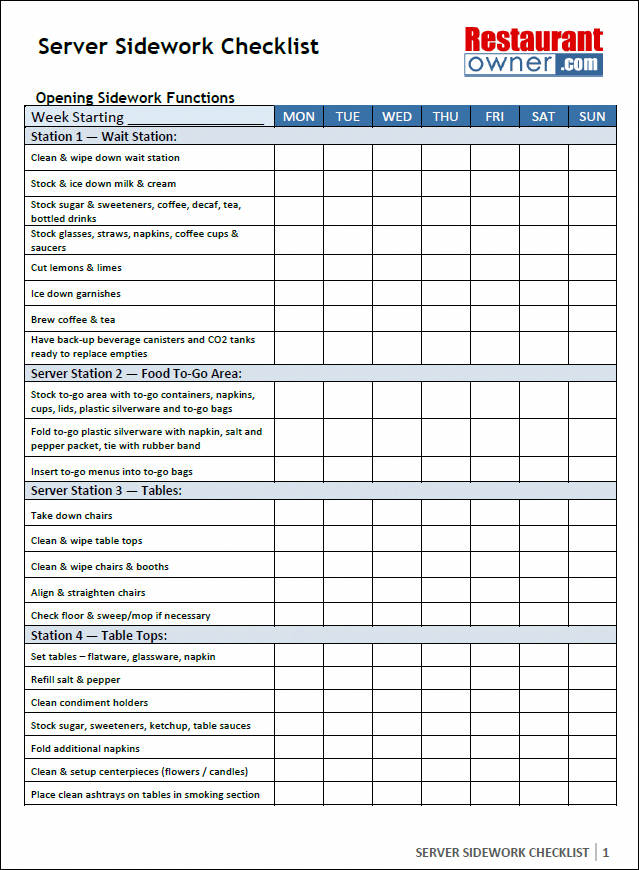 However, the exact first food is fairly insignificant – instead, it’s the variety of healthy foods you serve your baby in their first few months of eating solids that’s most important.
However, the exact first food is fairly insignificant – instead, it’s the variety of healthy foods you serve your baby in their first few months of eating solids that’s most important.
Studies have shown that trying a wide assortment of flavors with your infant can keep picky eating at bay, and will ultimately make them more willing to try (and accept!) other new foods in the future. Plus, these are the foods that are helping fuel your baby’s development and growth, so the more they can enjoy a variety of nutrient-rich foods, the better.
With this in mind, we’ve team up with our sponsor, Stonyfield Farm, to create a free printable chart that is loaded with ideas of nutritious foods and flavors to try with your baby – allowing you to track your attempts and their reaction.
So whether your baby is just starting on purées, moving onto solids, or doing Baby-Led Feeding, you’ll be able to make sure they’re getting a wide variety of healthy foods, and expanding their palette in the process.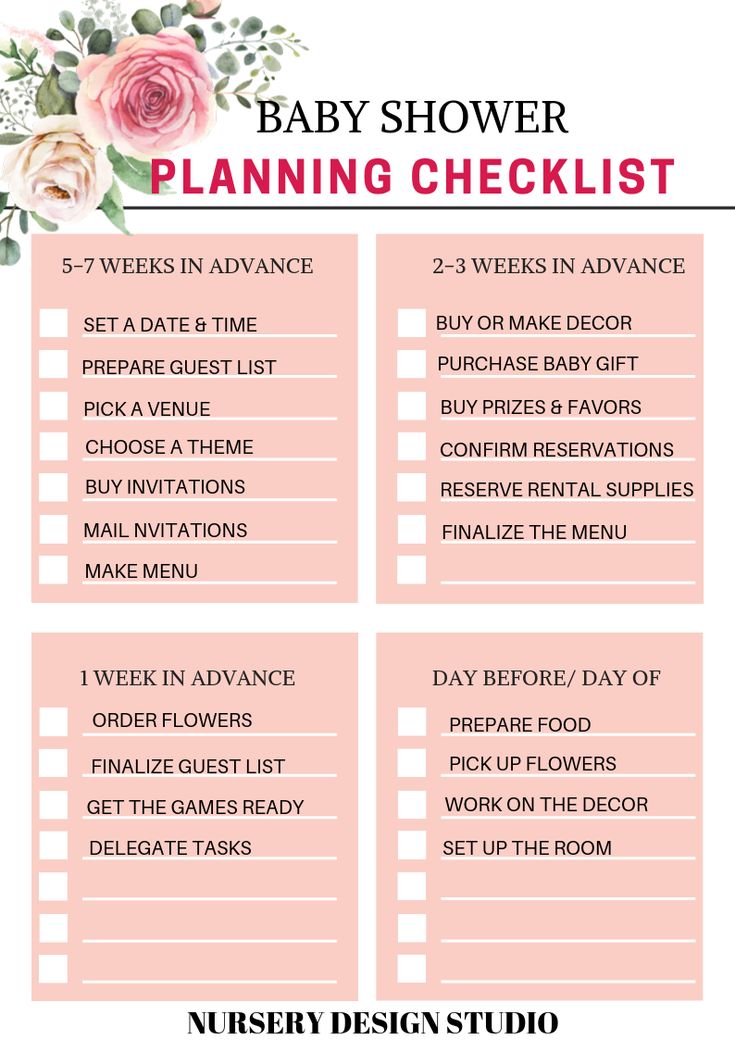
Read on to learn how to download the printable and get our helpful tips for starting solids.
PIN for when you’re ready to start solids!
PRINTABLE TRACKING CHART
So here it is! Our free Printable Tracking Chart for Baby’s First Foods.
You’ll see that it’s full of suggestions for nutritious foods to serve your child – from fruits and veggies, to grains, dairy and proteins. There’s even suggestions for different spices and flavors to incorporate to further expand their horizons.
And if there’s a certain food or dish you’d like them to try that’s not listed, simply add it in the “Other Foods” section that we’ve left blank.
Each food has 5 “check boxes” next to it, so as your serve it to your baby, you can check off one of the boxes. You can even make the circle into an emoji based on your child’s reaction. As it can take 5-10 tries for a baby to decide whether or not they like a certain food, this will help you track your attempts and serve as a reminder to be patient and keep trying!
To download our printable Baby’s First Foods Tracking Chart simply enter your email into the box below and we’ll immediately send you the PDF right to your inbox:
Whatever foods you decide to try first, keep these tips in mind:
The Waiting Game: Many pediatricians recommend waiting 3-5 days between trying each new food so if your baby develops any reaction, it will be easier to pinpoint the culprit. Others will waive this waiting period except with higher-risk foods like peanut butter or eggs. Discuss with your child’s Doctor the length of time their practice recommends waiting.
Others will waive this waiting period except with higher-risk foods like peanut butter or eggs. Discuss with your child’s Doctor the length of time their practice recommends waiting.
No Raw Honey: Avoid feeding you infant raw honey until they are at least a year old, as there is a risk of infant botulism, a deadly disease.
Avoid Cow’s Milk Until 1 Year: Babies can’t digest straight-up cow’s milk as well as they can breast milk or formula, and the high concentration of protein and minerals can cause stress to their developing kidneys. Doctors only recommend starting cow’s milk once your baby is a year old.
Yogurt is A-Okay! Because cow’s milk is off-limits for the first year, many parents think this means yogurt is a no-no. But that’s actually not the case! Pediatricians give yogurt the thumbs up for babies beginning at six months. Yogurt has live, active cultures that break down the lactose and protein, so it’s much easier for babies to digest.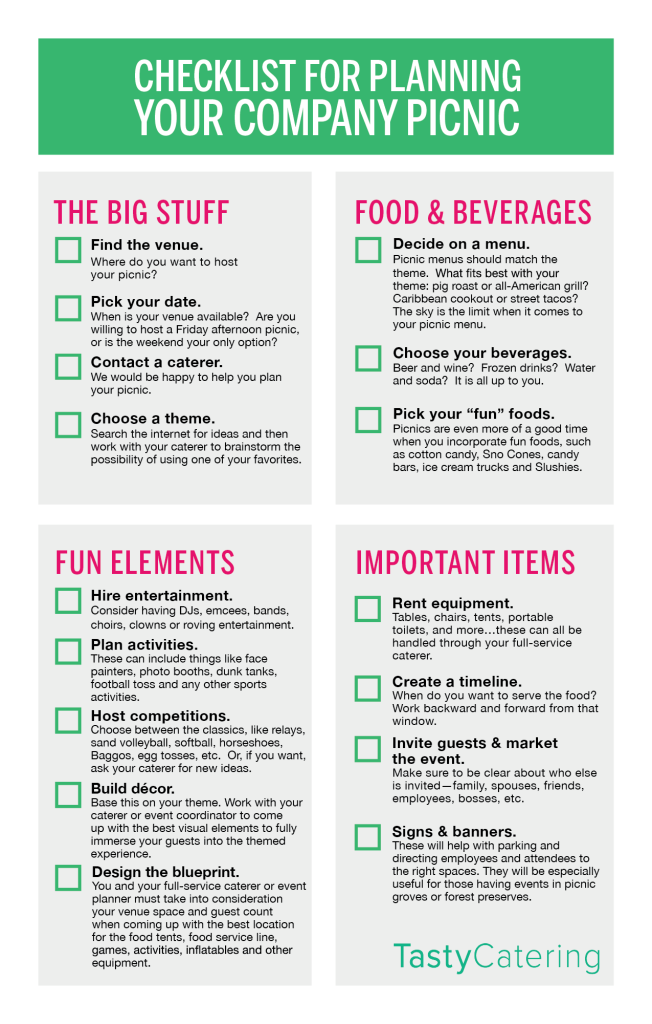 Some, like our recommended Stonyfield YoBaby yogurt, include added Vitamin D and the probiotic BB-12 which supports a healthy gut microbiome and aid in digestion. It’s also made with whole milk which is important as fat is critical for brain development. And like all of Stonyfield’s yogurts, YoBaby is organic which means it includes no harmful persistent pesticides, antibiotics, artificial growth hormones, or GMOs.
Some, like our recommended Stonyfield YoBaby yogurt, include added Vitamin D and the probiotic BB-12 which supports a healthy gut microbiome and aid in digestion. It’s also made with whole milk which is important as fat is critical for brain development. And like all of Stonyfield’s yogurts, YoBaby is organic which means it includes no harmful persistent pesticides, antibiotics, artificial growth hormones, or GMOs.
Don’t Undercook: Make sure everything you feed your baby is well cooked, especially meats, eggs and shellfish, as their bodies are more sensitive to bacteria and can therefore be at a higher risk of getting food poisoning.
Fish: Avoid fish with high levels of mercury like Swordfish and Marlin.
Keep Food Unsalted: Don’t add salt to any homemade food, and keep your eye on sodium levels of anything store-bought. The guidelines for a child under 1 is to have less than 1g of salt (0.4g sodium) a day.
Avoid Artificial Sweeteners: Babies don’t need artificial sugars, especially when you can use natural sweeteners like mashed or puréed fruits and veggies to sweeten more “bland” foods. But babies really don’t know any different – try them with one of Stonyfield’s YoBaby yogurts with no added sugar, like their Plain, Banana Mango or Veggie flavors, and you’ll see that they will quickly gobble it up!
But babies really don’t know any different – try them with one of Stonyfield’s YoBaby yogurts with no added sugar, like their Plain, Banana Mango or Veggie flavors, and you’ll see that they will quickly gobble it up!
Make Your Meat Tender: Make proteins like beef, chicken or pork easy to chew by tenderizing them in a slow cooker or InstaPot.
Steam or Roast Veggies: Soften your vegetables by steaming or roasting them. Purée if you are spoon feeding or keep them in long sticks for Baby-Led Feeding.
Cook With Broth: Cook any grains or vegetables in an unsalted bone broth instead of water. It not only adds additional nutrients, but exposes them to other flavors.
Allergens: It is no longer recommended to delay the introduction to potential allergens like peanut butter and eggs. In fact, studies have shown that the early introduction of allergenic foods around 6 months of age could potentially decrease their risk of developing a food allergy. Discuss your strategy with your child’s pediatrician, especially if you have a family history of food allergies.
Discuss your strategy with your child’s pediatrician, especially if you have a family history of food allergies.
Spice Things Up: Don’t be afraid to try different spices and seasonings with your baby. Sprinkle some cinnamon on apples, a squeeze of lemon on chicken or rosemary on potatoes. The more combinations they are exposed to, the more they will accept new foods in the future.
RELATED: 18 Tips to Raise an Adventurous, Non-Picky Eater From Baby to Toddler & Beyond
Try Different Cooking Methods: A food’s taste can be completely transformed depending on how you cook it – the difference between a boiled Brussel Sprout and a roasted one is like night and day. So mix it up! Once your baby has tried a food one way, use a different method the next time. Grill, roast, boil, steam, slow cook, sauté – expand your cooking repertoire and their palette at the same time!
First Aid: Always be present while your baby is eating. Know the difference between choking and gagging, and what to do in either case.
Know the difference between choking and gagging, and what to do in either case.
To download our printable Baby’s First Foods Tracking Chart simply enter your email into the box below and we’ll immediately send you the PDF right to your inbox:
Whatever you decide to try first, make sure it is a healthy, nutrient-rich choice. Bon appetit!
Thanks again to our sponsor, Stonyfield Farm, for making the #1 Pediatrician recommend yogurt – a perfect first food for 6+ months.
Looking for a great starter recipe for your baby’s breakfast that you and your family can also enjoy? Try our healthy Blueberry Oatmeal Pancakes – they have no added sugars, and are fluffy and delicious!
1.9K shares
- Facebook73
medical care for a child from 0 to one year old - Gemabank
The first year of life is the most difficult for the human body. It is very important not to miss possible developmental problems while they are still easy to fix, so you will often have to visit the clinic with a baby, even if he is absolutely healthy. Some studies can only be done at a certain age!
Some studies can only be done at a certain age!
First week after birth
DOCTORS. In the maternity hospital, the neonatologist examines the newborn and repeats the examination every day until discharge. After discharge, you must come to your home pediatrician - the main thing that doctors control at this stage - height, weight, basic reflexes, tone, advise you on regimen, hygiene, breastfeeding or formula selection, umbilical wound care and any other issues related to the health of your child.
VACCINATIONS. If the baby is healthy, full-term, and you sign a consent for his vaccination, in the first few hours after birth he is immunized against viral hepatitis B. This is very important, since newborns are practically defenseless against it.
At the age of 3-5 days, the newborn is also vaccinated with BCG - against tuberculosis.
SURVEYS. On the fourth day after the birth of full-term babies and on the seventh day after the birth of premature babies, neonatal screening is done in the maternity hospital , the so-called "heel test" - screening using a blood test taken from the heel of a newborn, for the early detection of five serious diseases:
- congenital hypothyroidism - violations of the production of thyroid hormones, which are compensated by replacement therapy;
- adrenogenital syndrome - a hereditarily caused violation of the synthesis of adrenal hormones; such a violation of the hormonal balance can lead to improper sexual development, short stature;
- phenylketonuria - the inability of the body to break down phenylalanine, an amino acid that many proteins contain, as a result of which toxins affect the central nervous system up to the development of mental retardation; successfully treated with timely diagnosis;
- galactosemia - a hereditary disorder of carbohydrate metabolism, in which the functioning of internal organs, primarily the central nervous system, is disrupted.
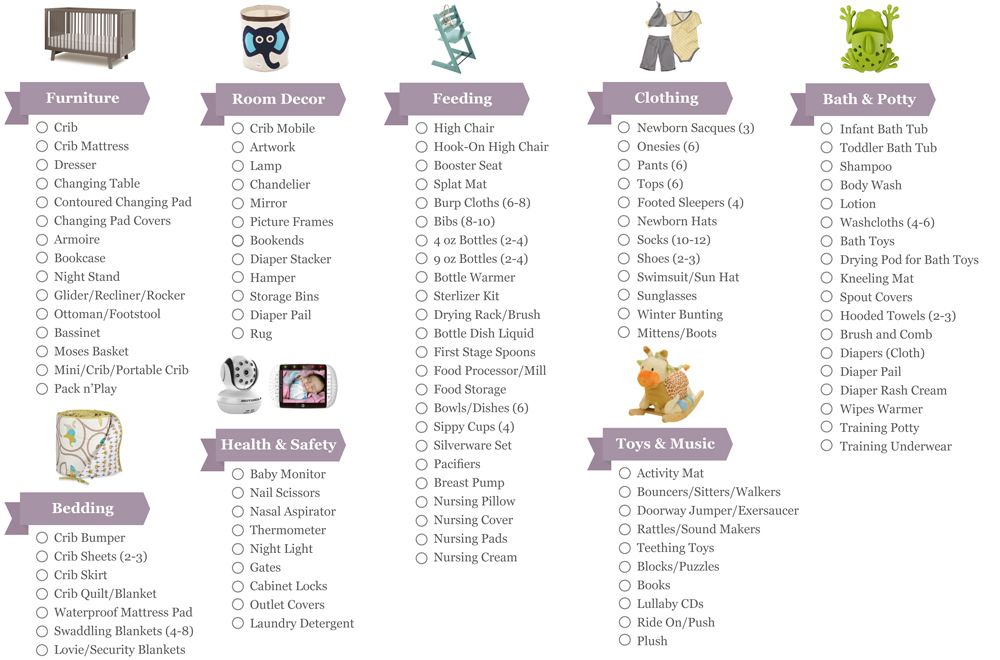
- cystic fibrosis - an incurable disease of the external secretion glands, requiring special therapy for the patient.
If you are discharged from the maternity hospital before the 4th day, be sure to contact the state polyclinic so that the screening is done free of charge after discharge. Screening results are reported to parents only if any of the tests are positive or questionable and need to be rechecked. If the blood was taken from the baby, but the results were not sent to you, then everything is in order.
The maternity hospital also performs audiological screening. - checks the baby's hearing. The results of the audiological screening are attached to the discharge. If suddenly this study was not done in the maternity hospital, it must be done in the clinic when the baby is 1 month old.
1 month
DOCTORS. The next day after discharge from the maternity hospital, pediatrician will come to your house to examine the newborn.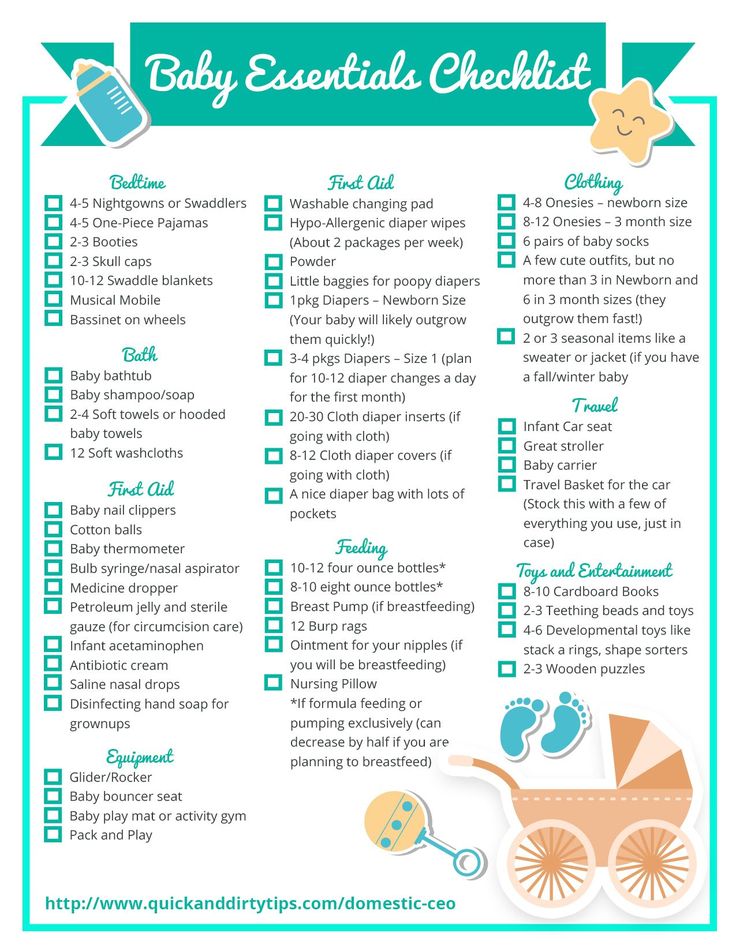 However, the first visit to the pediatrician in the clinic usually occurs when the neonatal period (28 days) has already passed.
However, the first visit to the pediatrician in the clinic usually occurs when the neonatal period (28 days) has already passed.
During the first year of life, the pediatrician should examine him every month. A standard examination includes weighing, measuring height, measuring the circumference of the head and chest, examining the throat, nose, genitals, palpation of the abdomen, listening with a phonendoscope.
It is also obligatory to visit a pediatric neurologist (in the first year of life, if there are no complications, you will have to visit a neurologist three times). The neurologist checks the fontanelles and how they overgrow, evaluates muscle tone, intracranial pressure. If parents are supporters of vaccination, in the early months of life, the pediatrician often requests the opinion of a neurologist in order to make the final decision on the readiness of the baby for vaccinations.
At the age of 1 month, the infant must be examined by an orthopedic surgeon. He checks muscle tone, the presence of an umbilical hernia, excludes congenital pathologies, for example, torticollis, gives recommendations on the morning workout, which the mother does on her own with the baby at home. At this age, it is very important to determine if a child has hip dysplasia - an underdevelopment of the joint, which can lead to joint dislocation and even lameness. With a timely diagnosis and early treatment, dysplasia is well corrected and does not leave consequences.
He checks muscle tone, the presence of an umbilical hernia, excludes congenital pathologies, for example, torticollis, gives recommendations on the morning workout, which the mother does on her own with the baby at home. At this age, it is very important to determine if a child has hip dysplasia - an underdevelopment of the joint, which can lead to joint dislocation and even lameness. With a timely diagnosis and early treatment, dysplasia is well corrected and does not leave consequences.
Ophthalmologist examines the baby's eyes to exclude congenital diseases - cataracts, pathology of the retina and optic nerve, and also checks the patency of the nasolacrimal canals - it is known that newborns do not start crying tears immediately after birth, but at first they cry without tears. In some cases, probing of the nasolacrimal canals is required.
For an absolutely healthy full-term ward, the ophthalmologist can schedule a follow-up visit when the child is six months old. For premature babies, the doctor forms a different, more frequent schedule of visits, especially in the first six months.
For premature babies, the doctor forms a different, more frequent schedule of visits, especially in the first six months.
VICTIONATIONS. When the baby turns one month old, according to the National Immunization Schedule, he should be given the 2nd vaccination against viral hepatitis B.
EXAMINATIONS. At the age of 1 month, ultrasound examinations are made for the baby. The standard set of studies is:
- neurosonography, or ultrasound of the brain. At this age, it is done through the fontanel and allows you to see the structure of the brain and blood flow. NSG allows to exclude congenital malformations of the brain;
- Ultrasound of the hip joints, the main purpose of which is to exclude (or confirm) hip dysplasia;
- Ultrasound of the abdominal organs. As in previous cases, the main purpose of this study is to exclude congenital pathologies;
- Ultrasound of the urinary system;
- Ultrasound of the heart (echocardiography).
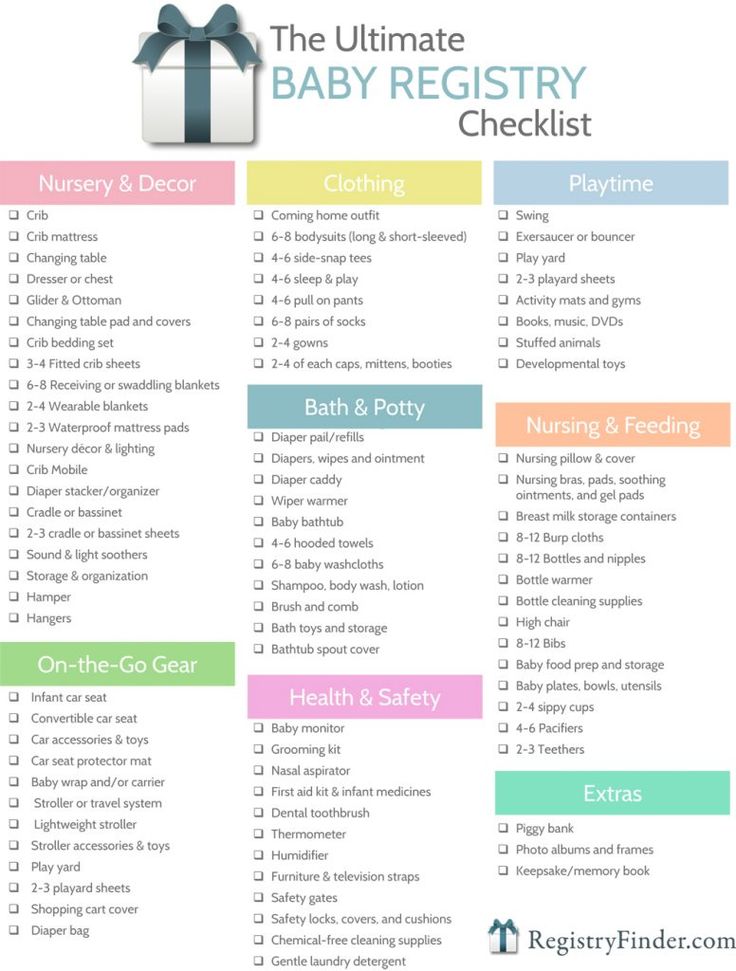
Often, a complete blood count and a complete urinalysis are prescribed for an infant, especially if he had (or still has) manifestations of physiological neonatal jaundice. KLA and OAM will also be taken before each vaccination to make sure that the child does not have an acute viral disease, and vaccination is not contraindicated for him.
2 months
DOCTORS. Pediatrician during the monthly check-up evaluates the results of tests and ultrasounds that you have done during this month.
VACCINATIONS. According to the National Calendar, at the age of two months, the child should receive the first dose of pneumococcal vaccine.
2 months - it's time to definitely decide whether you will vaccinate your baby against rotavirus infection, because the first dose of the vaccine must be administered before 12 weeks. The vaccine is called Rotatek, is given by mouth (no injections) and is given in three doses spaced 4 to 12 weeks apart, but all three doses must be taken no later than 32 weeks. Rotatek is not included in the National calendar. However, the prevention of rotavirus is a very useful thing, since children get sick repeatedly and often severely - with vomiting, diarrhea and fever, easily infecting adult family members. If you are vacationing in the Black Sea in the summer, you should think very seriously about vaccination - getting infected with rotavirus there is as easy as shelling pears.
Rotatek is not included in the National calendar. However, the prevention of rotavirus is a very useful thing, since children get sick repeatedly and often severely - with vomiting, diarrhea and fever, easily infecting adult family members. If you are vacationing in the Black Sea in the summer, you should think very seriously about vaccination - getting infected with rotavirus there is as easy as shelling pears.
3 months
DOCTORS. Again, you need to see an orthopedic surgeon and a neurologist. At this time, the innate reflex of resting on the legs begins to fade - it is gradually replaced by a newly acquired one, necessary in order to stand and walk in the future. The doctor checks how the baby holds the head, what condition his muscles are in, whether there is an umbilical or inguinal hernia, gives recommendations on developing gymnastics, and may recommend a massage course.
Pediatrician summarizes all the conclusions given by specialized doctors, developing final recommendations.
VACCINATIONS. According to the National calendar, pertussis-diphtheria-tetanus (DPT) vaccinations are given at 3 months, as well as vaccinations against poliomyelitis and against hemophilic infection. The latter is included in the National calendar marked "for risk groups", but pediatricians recommend doing it if possible. In domestic pharmacology, respectively, we are talking about three injections.
Since the domestic DTP is quite reactogenic, the French Pentaxim vaccine is popular among parents. Unlike DTP, it does not contain whole killed pertussis cells, but isolated pertussis toxoid, which reduces the risk of a reaction in the post-vaccination period. Pentaxim is a five-component vaccine, it develops immunity against all five of the listed diseases, that is, it is not necessary to vaccinate separately against polio and against hemophilic infection along with it. Another popular analogue of DTP is the Belgian Infanrix Hexa, it is six-component: it also contains a component that protects against hepatitis B.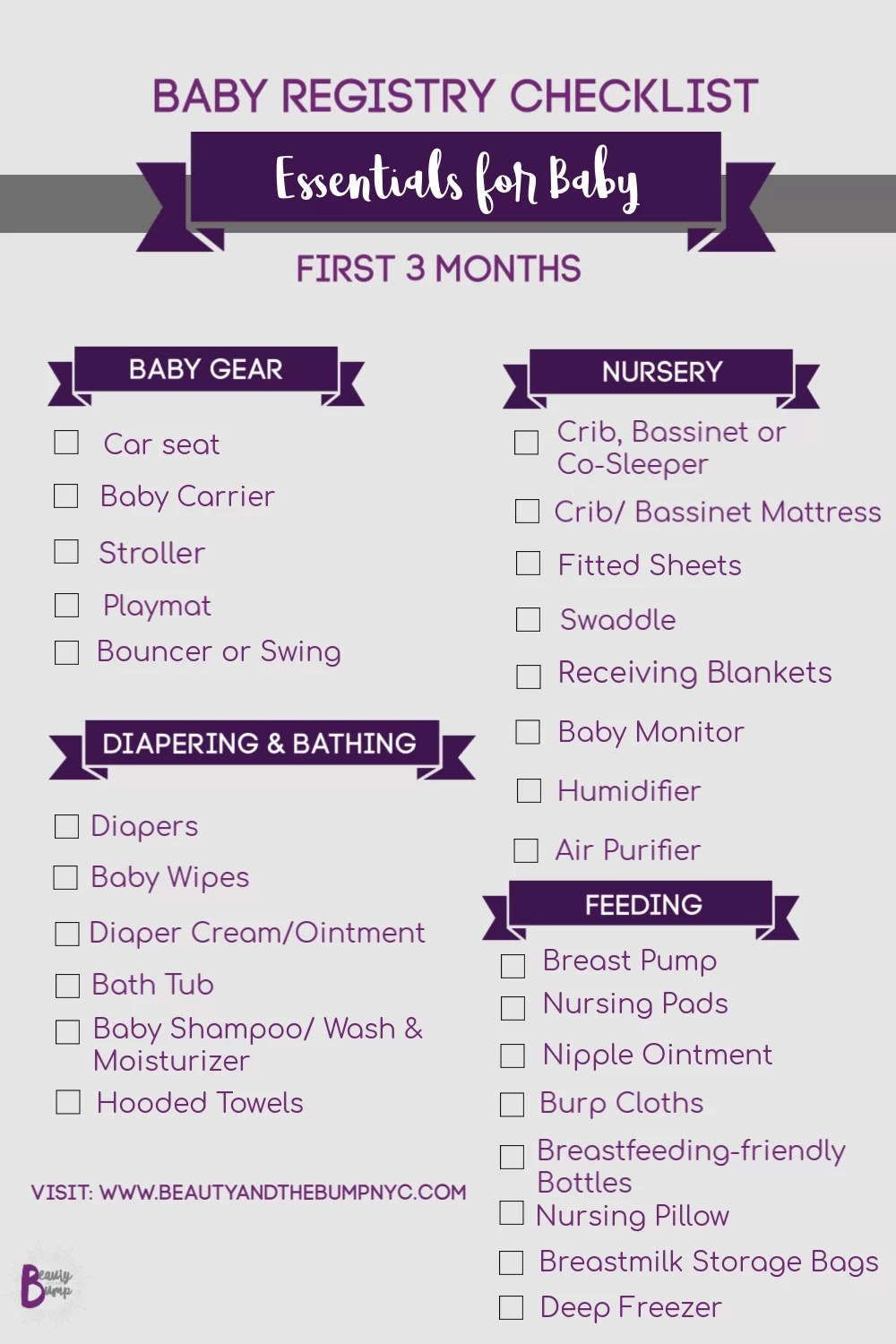 If for some reason you missed hepatitis B vaccination at 1 or 2 months (for example, you received a temporary medical exemption), this is the best option .
If for some reason you missed hepatitis B vaccination at 1 or 2 months (for example, you received a temporary medical exemption), this is the best option .
If you start immunizing your child against rotavirus infection on time, at 3 months he needs to receive a second dose.
4 months
DOCTORS. With pediatrician parents' plans for the introduction of complementary foods are discussed. For formula-fed and mixed-fed babies, pediatricians recommend starting complementary foods at four and a half months of age. For babies, this period comes later, sometimes after 8 months. Much depends on how the baby gains weight. Usually thin children are recommended hypoallergenic cereals, denser - vegetables.
VICTIONATIONS. At 4 months, the baby should receive the third and final dose of rotavirus vaccine. (Possibly later: the interval between doses can be from 4 to 10 weeks. It is only critical that the first dose be administered no later than 12 weeks, and the third no later than 8 months. )
)
should be done in the same period 2nd pneumococcal vaccine . There are two different methods of immunization of children up to a year: 3 times (at 2 months, 3 months and 6 months) and 2 + 1. If the first dose of pneumococcal vaccine was administered after 6 months, then 2 doses are given up to 12 months and once after 1 year.
5 months
DOCTORS. Pediatrician will assess the baby's new skills - whether he leans on his hands, whether he rolls over. If you have already started introducing solid foods, your pediatrician will ask questions about your baby's reaction to the new food.
VACCINATIONS. The official recommendation of the National Calendar for the second vaccination against whooping cough, diphtheria and tetanus , as well as for vaccinations against polio and against hemophilic infection - 4.5 months, but in practice they are much more often done exactly at 5 months, since parents prefer to combine vaccination with a routine examination by a pediatrician.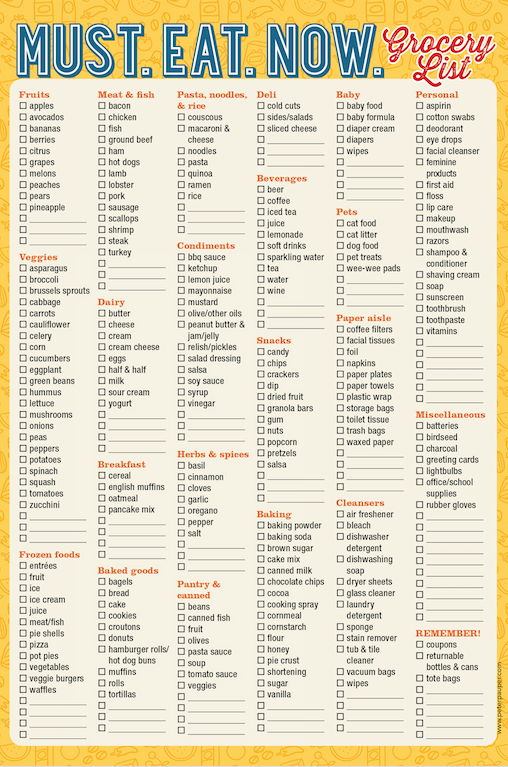
6 months
DOCTORS. Six months is an important milestone. And again, the time is coming for a quarterly visit to neurologist . At the reception, he will look at how the baby is developing, the state of muscle tone and the size of the fontanel.
See an orthopedic surgeon again at half a year. By this age, many babies begin to roll over and crawl, and some even sit up. The orthopedist will evaluate the development of the muscular corset.
The Ophthalmologist will perform a standard set of tests to make sure your baby's vision is developing normally.
The semi-annual examination ends with a mandatory visit to pediatrician.
6 months - the time when the baby's body is preparing for the eruption of the first teeth, and the gums can greatly disturb him. This can cause sleep disturbance, restless behavior and even refusal to eat, before the appearance of the first tooth, the child may have a fever, runny nose. The pediatrician will give you recommendations on how to make this difficult process as easy as possible.
The pediatrician will give you recommendations on how to make this difficult process as easy as possible.
VACCINATIONS. At six months, the third, last dose is administered pertussis, diphtheria and tetanus vaccines, polio vaccines and Haemophilus influenzae vaccines. The third vaccination against hepatitis B is also given at six months .
It is recommended to suspend the introduction of new foods into the diet a week before and a week after the routine vaccination. If your baby is already trying complementary foods, pause for the duration of the vaccination (you do not need to cancel already introduced products).
7 months
DOCTORS. As usual, once a month you need to visit pediatricians. The older the young patient becomes, the more difficult these visits can be: the baby already clearly distinguishes "his" adults (whom he sees every day) from "strangers", strangers, including doctors. At the same time, his interest in the world around him is growing, so bright pictures on the walls, new toys in the clinic, smiling doctors and nurses are very important for a calm visit to the clinic.
At the same time, his interest in the world around him is growing, so bright pictures on the walls, new toys in the clinic, smiling doctors and nurses are very important for a calm visit to the clinic.
8 months
DOCTORS. By eight months, the child can already stand, holding on to a support. His games with toys become meaningful. He develops an interest in food - he wants to try the food that his parents eat. He is interested in other children, especially if they are older. Putting it on the scales at pediatrician, most likely will no longer work - from now on we weigh ourselves while sitting!
9 months
DOCTORS. Nine months is a new critical stage in the development of the child. He is preparing to take the first steps, which means that his ability to master the world around him will change dramatically. AT 9months pediatrician evaluates how the baby interacts with people and objects, whether he has babble, what syllables he says. Important information will be how easily he falls asleep, what kind of sleep he has developed, how the baby behaves during the day.
Important information will be how easily he falls asleep, what kind of sleep he has developed, how the baby behaves during the day.
If the child is completely healthy, an additional visit to the neurologist and orthopedic surgeon at 9 months is not required. However, the pediatrician can appoint an additional consultation with these specialists if something raises questions in him.
VICTIONATIONS. 9 months is the age at which the first meningococcal vaccine can be given . It is not included in the National calendar, that is, it cannot be done at the expense of the state budget at the expense of the state budget. However, modern pediatricians strongly recommend doing it. Meningococcal infection, unfortunately, has a high mortality rate, and develops in a matter of hours, and often they do not even have time to diagnose it, much less take the patient to the hospital before the changes are irreversible. On the territory of Russia there is no certified vaccine against meningococcal type B infection (in Europe it is - this is the Bexsero vaccine), but you can protect children from meningitis types A, C, Y and W-135 - the Menactra vaccine is available in our country. It is administered in two doses: at nine months and a year.
It is administered in two doses: at nine months and a year.
10 months
DOCTORS. At ten months, you need to undergo a monthly preventive examination by a pediatrician , to re-evaluate the general health of the baby.
11 months
DOCTORS. Of the doctors at 11 months, you have to visit only pediatricians who have already become good friends. There are no surprises - the procedure is familiar to you.
12 months
DOCTORS. Neurologist. A year old, he already asks questions about how many words and syllables the baby says, evaluates the formation of a pointing gesture, simple communication skills.
Orthopedist. Many children begin to walk by this age, and weight bearing on developing feet can cause varus or valgus deformity, so this visit is especially important.
Ophthalmologist . If a one-month-old baby could not yet properly focus his eyes on an object, a one-year-old baby is already watching the toy with pleasure, and this makes it possible to diagnose some vision pathologies, such as strabismus, early. A number of pathologies of the retina and lens are also excluded per year.
A number of pathologies of the retina and lens are also excluded per year.
Otorhinolaryngologist. His area of responsibility is ear-nose-throat.
Dentist . By this time, most children already have several teeth, and the dentist will be able to assess how the bite is formed and give useful recommendations for daily hygiene. They are especially relevant if the baby is still eating at night (breast milk, formula, in general, anything but water).
Pediatrician After a year, you will only visit once every three months.
VICTIONATIONS. vaccinations against measles, rubella and mumps (mumps) are given per year: is considered the best Belgian Priorix, but a domestic analogue is often also made. She will protect the child almost to school, since revaccination is done only at 6 years old.
If you decide to vaccinate your son or daughter against meningococcal disease, year is the time for a second dose of Menactra.
Not included in the National Calendar, but recommended by pediatricians varicella vaccine - Varilrix. Although chickenpox is not considered a serious illness by many parents, it can occur in very different ways and, unfortunately, lead to complications. Varilrix can be done from 12 months. Simultaneous administration of Varilrix with Priorix (in different limbs) is acceptable, this does not reduce the effectiveness of immunization and does not increase the likelihood of a reaction in the post-vaccination period. However, if they were not made at the same time, at least 30 days must pass between Priorix and Varilrix.
EXAMINATIONS. At 12 months, it is necessary to do a test for the Mantoux reaction - including those children who were vaccinated against tuberculosis in the maternity hospital. The test allows you to determine whether the child is immune to tuberculosis and whether he needs revaccination. Since the Mantoux reaction is evaluated on the third day after the test, a visit to the pediatrician for evaluation is usually combined with Priorix.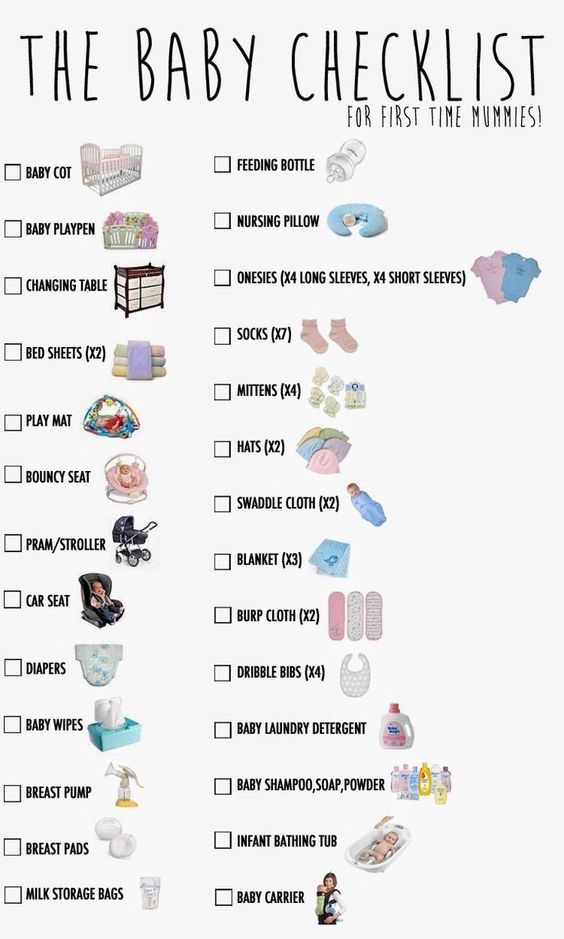
It is also recommended to do ECG a year, especially if an additional chord of the left ventricle was previously detected, systolic murmurs, etc. were heard.
If at 1 month the child has not had ultrasound of the urinary system (sometimes only ultrasound of the abdominal organs is limited), then it must be done at 1 year.
In addition to a general blood test and a general urinalysis, a year you also need to do a general stool test, , and additionally donate blood for glucose.
Well, that's it! Happy first year to you!
The first year of a child's life is the most difficult for parents. You have to master a huge amount of information, hear and read a lot of different opinions and make your own decisions about how you will take care of the health of your baby.
Source
Free materials
Schedule of weekly free mailings
Please note: each mailing is carried out only once a week on the specified day from 10-00 to 22-00 Moscow time. You can apply for several materials at once. If the conditions of subscription and likes are met, you will receive each material to your email along with its next regular mailing on the corresponding day of the week.
You can apply for several materials at once. If the conditions of subscription and likes are met, you will receive each material to your email along with its next regular mailing on the corresponding day of the week.
Monday
10:00-22:00 (Moscow time)
Monday
10:00-22:00 (Moscow time)
Baby's readiness to feed
Checklist
Get a free checklist and evaluate how ready your baby is For complementary foods
Monday
10: 00-22: 00 (MSC)
Monday
10: 00-22: 00 (MSC)
Elimination of complementary foods
A brochure
TOP TOP Problems of complementary foods and options for their solution
Monday
10:00-22:00 (MSK)
Monday
10:00-22:00 (Moscow time)
Types of complementary foods
Brochure + comparison table
Comparison of existing types of complementary foods, their pros and cons.
NEW! Monday
10:00-22:00 (Moscow time)
At what age do children master certain skills related to eating (sucking, vertical chewing, rotary chewing, drinking from a cup, mastering a spoon, etc. ) ).
) ).
Tuesday
10:00-22:00 (MSK)
Tuesday
10:00-22:00 (MSK)
22 Signs of Successful Complementary Feeding
Checklist
Get a free checklist to see if your complementary foods are going as planned
Tuesday
-2 :00 (MSK) Tuesday
10:00-22:00 (MSK)
What and when to introduce complementary foods
Table
Reminder on the timing of the introduction of basic products in complementary foods
Tuesday 9002 00 (MSK)
Tuesday
10:00-22:00 (MSK)
How to develop a child's food interest and appetite
Brochure
Tips for pumping PI (up to a year) and improving the appetite of a child (over 1 year).
NEW! Tuesday
10:00-22:00 (Moscow time)
Demo version of the book " Big book of the first purees ": recipe cards for multi-ingredient purees for the first months of complementary foods (6-12 months), preparation information and storage of food for first foods
Wednesday
10:00-22:00 (Moscow time)
Wednesday
10:00-22:00 (Moscow time)
Baby's readiness for weaning
Checklist
baby ready for weaning
Wednesday
10:00-22:00 (MSK)
Wednesday
10:00-22:00 (MSK)
Balanced Diet
Wednesday
10:00-22:00 (MSK)
Wednesday
10:00-22:00 (MSK)
9 steps to the dream eating behavior
NEW! Wednesday
10:00-22:00 (UTC)
Tips for teaching chewing, safety, from puree to pieces, approaches to learning to chew, an excerpt from the book The Science of Complementary Food on introducing pieces into the diet
Thursday
10:00-22:00 (Moscow time)
Thursday
10:00-22:00 (Moscow time)
Child's readiness for the common table
Checklist
Thursday
10:00-22:00 (MSK)
Thursday
10:00-22:00 (MSK)
Poop Guide
Infographics 9003 the color and texture of the baby's stool.











